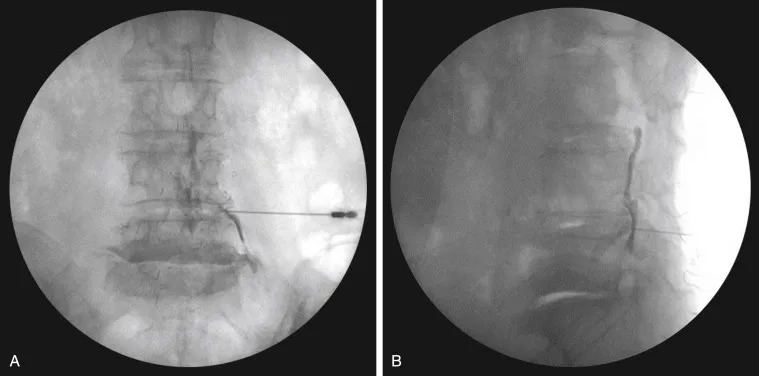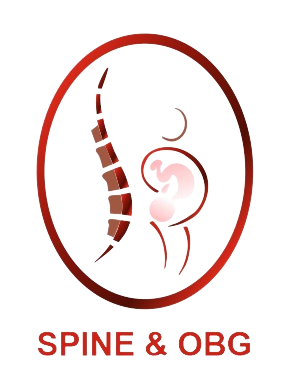
Selective Nerve Root Block
Selective Nerve Root Block
Selective nerve root block is a minimally invasive procedure used to diagnose and treat nerve pain caused by irritation or compression of a spinal nerve root.
During the procedure, a small amount of local anesthetic and steroid medication is injected near the affected nerve root under fluoroscopic guidance. This helps to reduce inflammation and alleviate pain by temporarily blocking the transmission of pain signals along the nerve.
Selective nerve root block can be an effective diagnostic tool to pinpoint the source of nerve pain and provide targeted pain relief. It may be recommended for conditions such as herniated discs, spinal stenosis, or foraminal stenosis when conservative treatments are ineffective.
Common reasons for undergoing Selective Nerve Root Block include diagnosing the source of nerve pain, providing targeted pain relief for conditions such as herniated discs or spinal stenosis, and avoiding more invasive surgical procedures when conservative treatments are ineffective.
Our Spine Surgeon Dr. Arjun R H H will assess your condition thoroughly before surgery to determine the most suitable course of action.
Minimally invasive spine surgery is typically performed using specialized instruments and techniques that allow the surgeon to access the spine through small incisions.
These procedures often utilize fluoroscopy or other imaging techniques to guide the surgeon’s instruments to the precise location. By minimizing damage to surrounding tissues, muscles, and nerves, this approach aims to reduce pain, scarring, and recovery time for the patient.
The recovery time for a selective nerve root block is typically minimal. Patients may experience some soreness or mild discomfort at the injection site for a day or two following the procedure.
However, most individuals are able to resume their normal activities shortly after the injection. It’s common for patients to experience pain relief within a few days as the steroid medication begins to take effect, although the duration of pain relief can vary depending on the individual and the underlying condition being treated.
The risks of selective nerve root block are generally low but may include temporary bruising at the injection site, allergic reactions to medications used during the procedure, infection, or nerve damage.
Rarely, patients may experience side effects such as headache, dizziness, or flushing. It’s essential for patients to discuss any concerns or potential risks with Dr4 Arjun R H H before undergoing the procedure.
The benefits of selective nerve root block include providing targeted pain relief by reducing inflammation and alleviating nerve-related symptoms such as pain or numbness. Selective nerve root block can also serve as a diagnostic tool to identify the specific nerve root responsible for symptoms, guiding further treatment decisions.
By avoiding more invasive surgical procedures, selective nerve root block offers a minimally invasive alternative with potentially fewer risks and faster recovery times. Additionally, selective nerve root block may help improve overall quality of life by enhancing mobility and function for individuals experiencing nerve-related pain.
Dr. Arjun R. H. H typically evaluates the necessity for selective nerve root block using a combination of methods, including physical examination, imaging tests such as MRI, and a review of the patient’s medical history.
During the physical examination, Dr. Arjun R H H assesses strength, sensation, reflexes, and symptoms like pain and mobility limitations in the affected area.
Imaging tests, particularly MRI, help pinpoint the location and severity of spinal issues like nerve compression. Based on these evaluations, Dr. Arjun H H determines if selective nerve root block is the suitable treatment option for the patient’s condition.
Selective nerve root block is not considered as a surgical procedure, as it is a minimally invasive injection performed using fluoroscopic guidance rather than involving surgery.
Therefore, selective nerve root blockthe duration of an procedure is relatively short, typically lasting around 15 to 30 minutes. After the injection, patients may remain in the recovery area for a short observation period before being discharged home.
Depending on the patient’s overall condition, the doctor may provide personalized recommendations. For more information and guidance, it’s advisable to consult Spine Surgeon Dr. Arjun R H H.
There is typically no hospital stay required following a selective nerve root block procedure. It is performed as an outpatient procedure, meaning patients can go home the same day after a short period of observation in the recovery ward.
Once the effects of the local anesthetic have worn off and there are no immediate complications, patients are usually discharged home with instructions for post-procedure care.
For more information and guidance, it’s advisable to consult Spine Surgeon Dr. Arjun R H H.
After selective nerve root block surgery, it’s important to prioritize proper posture, avoid heavy lifting or twisting motions, and engage in gentle stretching and strengthening exercises recommended by Dr. Arjun R H H.
Additionally, maintaining a healthy lifestyle with regular physical activity, balanced nutrition, and adequate hydration can support overall spine health.
For more information and guidance, it’s advisable to consult Spine Surgeon Dr. Arjun R H H.
Views: 4
